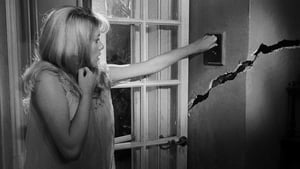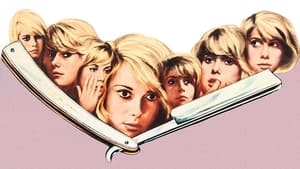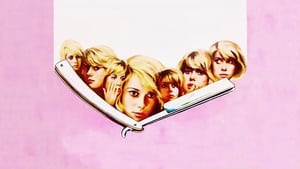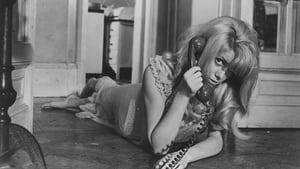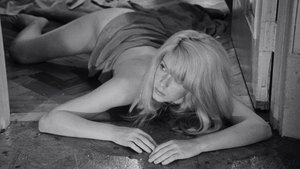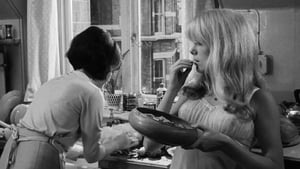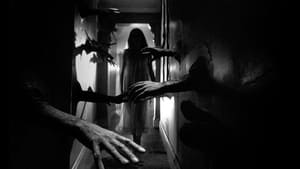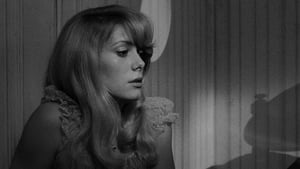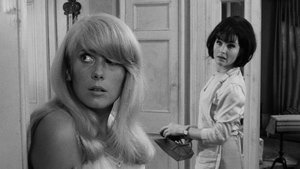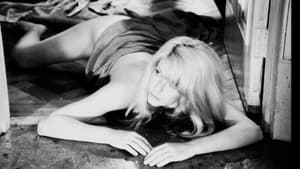Video Sources 0 Views
- Watch trailer
- Repulsion 1965 Colorized

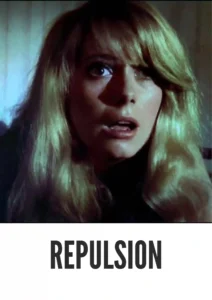
Synopsis
Table of Contents
Toggle
Prepare to be disturbed by Repulsion, Roman Polanski’s groundbreaking 1965 psychological horror masterpiece, now meticulously colorized to amplify its unsettling atmosphere and showcase Catherine Deneuve’s iconic performance. This film plunges into the depths of a young woman’s unraveling psyche, offering a chilling exploration of isolation, sexual anxiety, and mental breakdown within the claustrophobic confines of an apartment. Perfect for fans of classic horror and those seeking a thought-provoking cinematic experience, this HD download delivers a fresh and visually arresting take on a landmark film.
Repulsion follows Carole Ledoux (Catherine Deneuve), a withdrawn and disturbed young manicurist living in London with her older sister, Helen. Carole struggles with daily interactions and displays a marked detachment from reality. She is particularly troubled by her sister’s relationship with a married man, Michael, and exhibits a strong aversion to male attention in general.
When Helen and Michael leave for a vacation in Italy, Carole is left alone in their apartment, and her already fragile mental state begins to rapidly deteriorate. Isolated and haunted by vivid hallucinations and nightmares, she descends into a terrifying spiral of madness. The apartment itself becomes a reflection of her fractured mind, with cracks appearing in the walls and unsettling visions plaguing her waking hours.
As Carole’s grip on reality loosens, her repulsion towards men intensifies, leading to acts of violence. The film culminates in a harrowing depiction of psychological breakdown, leaving the audience to question the nature of sanity and the destructive power of repressed trauma.
The film features a stellar cast, led by Catherine Deneuve’s unforgettable performance:
-
Catherine Deneuve as Carole Ledoux
-
Ian Hendry as Michael
-
John Fraser as Colin
-
Yvonne Furneaux as Helen Ledoux
-
Patrick Wymark as Landlord
-
Renée Houston as Miss Balch
Repulsion is a psychological horror film that delves into the depths of the human psyche. Its themes of isolation, sexual anxiety, and mental breakdown make it a disturbing and thought-provoking cinematic experience.
Released in 1965, Repulsion marked Roman Polanski’s first English-language film and solidified his reputation as a visionary director. The film’s innovative use of cinematography, sound design, and psychological themes pushed the boundaries of the horror genre and paved the way for future masterpieces such as Rosemary’s Baby and The Tenant, which together form Polanski’s “Apartment Trilogy.” Repulsion remains a landmark film, celebrated for its artistic merit and its unflinching exploration of the dark side of the human mind.
This colorized version of Repulsion has been painstakingly restored using advanced digital techniques, enhancing the visual impact while remaining true to the film’s original atmosphere and intent. The colorization process involved a meticulous analysis of the grayscale tones in the original black and white footage, with careful attention paid to assigning appropriate colors to each scene and object. While the specific software used remains proprietary, the techniques employed included sophisticated algorithms for color palette selection, motion estimation, and image enhancement. This process breathes new life into the film, making it even more accessible to modern audiences while preserving its artistic integrity.
-
: Roman Polanski
-
: Roman Polanski, Gérard Brach, David Stone
-
: Chico Hamilton
-
: Gilbert Taylor
-
: Alastair McIntyre
-
: Compton Films, Tekli
-
: 105 minutes
-
: MP4
-
: HD (1080p)
-
: Compatible with most devices, including smartphones, tablets, computers, and smart TVs.
Repulsion (1965) is widely regarded as a masterpiece of psychological horror. Critics have praised its innovative direction, its unsettling atmosphere, and Catherine Deneuve’s unforgettable performance. The film has been lauded for its unflinching exploration of mental illness and its ability to create a sense of claustrophobia and dread. Repulsion remains a highly influential and thought-provoking film, celebrated for its artistic merit and its enduring power to disturb and fascinate audiences.
-
: What is Repulsion about?
-
A: Repulsion is a psychological horror film about a young woman’s descent into madness, triggered by isolation, sexual anxiety, and repressed trauma.
-
-
: Is Repulsion (1965) a well-regarded film?
-
A: Yes, Repulsion is widely regarded as a masterpiece of psychological horror and is considered one of Roman Polanski’s finest works.
-
-
: Is this version of Repulsion colorized?
-
A: Yes, this version has been professionally colorized to enhance the viewing experience.
-
-
: What makes Repulsion interesting for classic film fans?
-
A: Repulsion is a landmark film that pushed the boundaries of the horror genre and features an iconic performance by Catherine Deneuve.
-
-
: What is the download format?
-
A: The download format is MP4, which is compatible with most devices.
-
-
: What resolution is the download?
-
A: The resolution is HD (1080p), providing a high-quality viewing experience.
-
Watch Repulsion Today!
